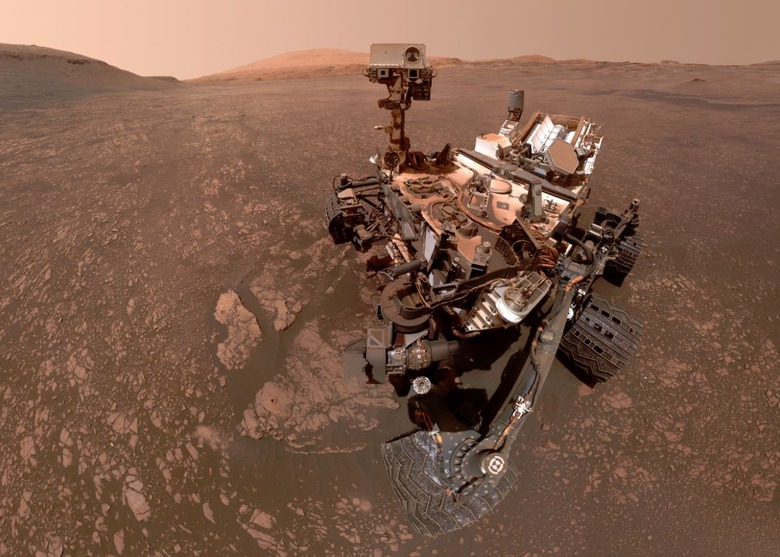NASA's Methane Discovery On Mars Just Got A Whole Lot More Interesting
Back in late June, NASA revealed that sensors on its Curiosity rover were returning alarmingly high readings of methane that came seemingly out of nowhere. Determining where that methane came from — and whether the process responsible for it are geological or biological — is now a major area of research for scientists. A new study led by Newcastle University doesn't offer a definitive answer, but it does bring us one tantalizing step closer.
In a paper published in Scientific Reports, the researchers effectively rule out one possible source of the methane, arguing that, based on observations of wind erosion on Mars, it's unlikely that the methane is the result of rocks being broken down and releasing the gas into the air.
Changes in the background levels of methane in the air on Mars have been detected for a while now, and nobody is really sure what is responsible. Methane can be created by microbial life, but there are also geological processes — like methane being released from rock as it is broken down by wind — that could be the source.
Put simply, methane on Mars isn't a smoking gun that life exists (or ever existed) on the planet, so scientists are working on narrowing down the possibilities. In this new study, the researchers crunched the numbers on how much erosion takes place on Mars, and tried to match that up with seasonal changes in the background methane levels.
When they factored everything in, they couldn't produce a solid link between wind erosion and methane spikes, meaning that it's likely coming from another source. Ruling wind erosion out means that there's one less potential geological source of the methane, but it doesn't prove that the methane is the result of biological sources.
"It's still an open question. Our paper is just a little part of a much bigger story," Dr. Emmal Safi, lead author of the work, said in a statement. "Ultimately, what we're trying to discover is if there's the possibility of life existing on planets other than our own, either living now or maybe life in the past that is now preserved as fossils or chemical signatures."
